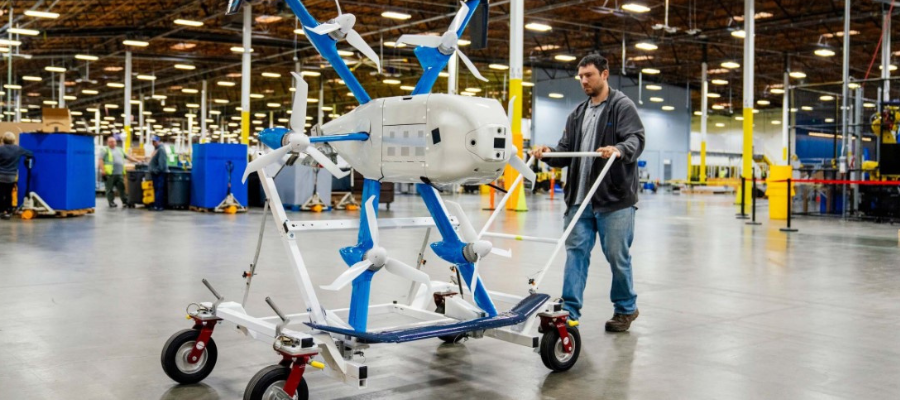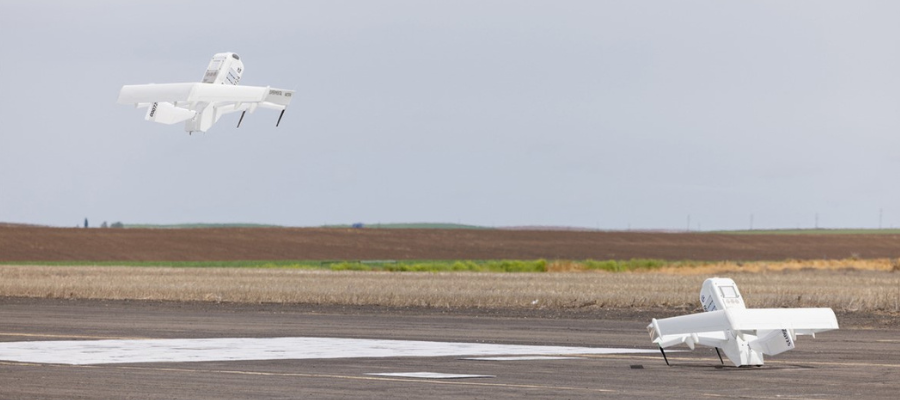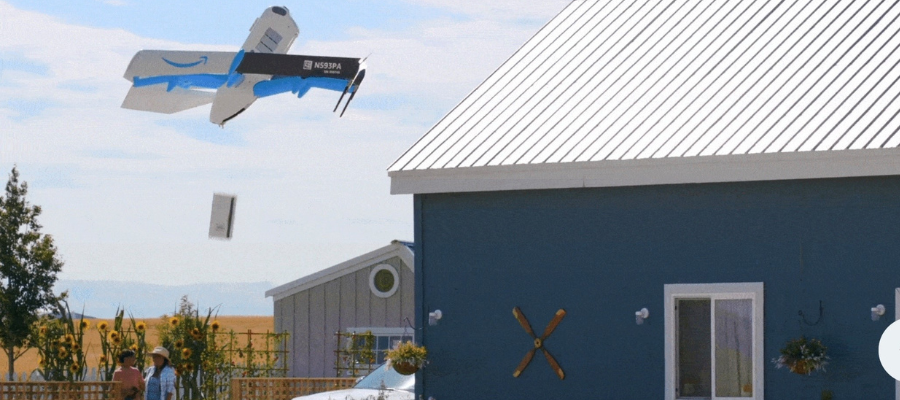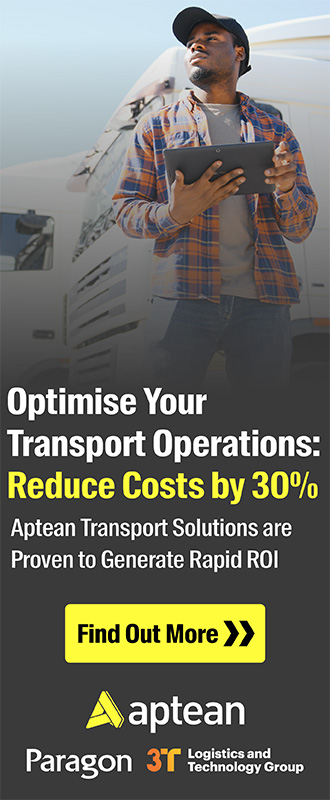🕒 Article read time: 2 minutes
Release the drones... Amazon takes 'one hour delivery service' to the skies in UK

You might think that being able to order something online and have it delivered the very next day is impressive enough. Well, strap yourselves in because, if current trials go to plan, you could be receiving your order within an hour of placing it.
Amazon is one of six organisations selected by the Civil Aviation Authority (CAA) to participate in a ground breaking trial which focuses on 'beyond visual line of sight' (BVLOS) drone flights, allowing operators to control drones without keeping them in direct eyesight.
Amazon's Prime Air service is already fulfilling this service in parts of the US like Lockeford, California, and College Station, Texas so why not here in the UK? Amazon's aim is to begin the one hour delivery service in Great Britain before the end of the year.

Amazon's drones will be permitted to fly to distances of around 12 kilometres from their base in one of the UK’s fulfilment centres. The trials will examine how the drones identify and avoid other aircraft, as well as the signals sent to flag their presence to others in the airspace and air traffic control.
Kirkwall Airport in the Orkney Islands has been named as one of the testing locations.
“Exploring the options of how drones can be safely and successfully incorporated into more of the UK’s airspace is key,” said Frederic Laugere, Head of Innovation Advisory Services at the CAA.
“It is vital that projects such as this take place to feed into the overall knowledge and experiences that will soon enable drones to be operating beyond the line of sight of their pilot on a day-to-day basis, while also still allowing safe and equitable use of the air by other users.”

Small packages of up to five pounds in weight can be placed into the drone’s storage container at its fulfilment centres. The drones would then carry the package to a delivery point, usually a consumer’s garden, and eject it from the air.

Whereas most drones are not able to sense or avoid hazards and obstacles, Amazon has designed a ‘sophisticated’ and ‘industry-leading’ sense-and-avoid system – aiming to ensure safety when carrying the product in transit and when lowering towards the ground.
Amazon’s algorithms are said to utilise a ‘diverse suite’ of technologies to identify static objects in the drone’s path, as well as moving objects on the horizon, and change its course to avoid them.
The drone is also said to steer clear of people, animals and other obstacles when landing. Consumers are not expected to pay extra for the service, which will be offered alongside the usual range of delivery options.
Alexandra Herdman, Senior Policy Manager, Logistics UK said: "Our members are committed to making the transition to zero emission vehicles but fleet operators face many challenges in meeting decarbonisation deadlines.
"It’s encouraging to see Amazon's drone programme reaching its next stage as using new technologies to trial innovative ways of diversifying fleet operations will be key, as the industry strives to moves towards net zero.
“The potential ability to deliver packages within an hour not only represents a positive step forward in efficiency and customer satisfaction but also represents a significant progression toward enhancing the overall resilience and responsiveness of supply chains across the UK."
Published On: 22/08/2024 14:39:35

Comments Section
If you are a Logistics UK member login to add comments.
News In Brief
Toyota and Coca Cola come together with Air Liquide to explore hydrogen-fuelled future
Toyota, Coca-Cola and Air Liquide have teamed up to test hydrogen fuel cell trucks, aiming for zero tailpipe emissions and improved hydrogen infrastructure
The hydrogen-powered truck utilises Toyota fuel cell modules which combine hydrogen (H₂) and oxygen (O₂) molecules into water while simultaneously generating electricity. As a result, the only tailpipe emission is water.
Air Liquide, a leader in the production and distribution of low-carbon and renewable hydrogen, supplies hydrogen from renewable sources for the project.
Through these hydrogen truck projects, Toyota intends to support the decarbonisation of heavy-duty road transport, which accounts for a quarter of European freight transport based on tonne-kilometres performed. Commercial trucks’ usage patterns and their demand for large volumes of hydrogen position them as key contributors in developing sustainable hydrogen infrastructures.
Denise Beedell, Senior Policy Manager, Logistics UK said: “Our members are committed to making the transition to zero emission vehicles. Fleet operators face many challenges in meeting decarbonisation deadlines.
“It’s very encouraging to see logistics giants like Toyota and Coca Cola coming together with Air Liquide to explore greener ways of moving goods, using new technologies in heavier vehicles in order to trial new ways of diversifying their fleet as the industry strives to moves towards net zero.”
More than 70% of Europe’s freight is transported by heavy-duty vehicles, predominantly diesel-powered, with alternative powertrains comprising just 1%. Despite being only 2% of Europe’s automobiles, these trucks are the second-largest contributors to transport CO₂ emissions. Toyota believes hydrogen fuel cell could be the solution.

Latest articles
National Highways launches Too Close for Comfort campaign
It's time to back off and stop intimidating the person driving in front of you.
Read time: 2 minutes
View article
Policy win: Government launches new strategies around growth, infrastructure and trade
Last month, the UK government published the long-awaited Modern Industrial Strategy, Trade Strategy, and Infrastructure Strategy – each setting out intentions, ambitions and next steps for respective policy areas, central to the future of logistics.
Read time: 3 minutes
View article
Generation Logistics Case Study
Grace Brown, Logistics Degree Apprentice - ASDA.
Read time: 2 minutes
View article